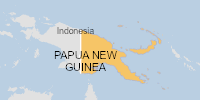RSS feed source: Global Disaster Alert and Coordination Systems (GDACS).
Synopsis
The Cyberinfrastructure for Sustained Scientific Innovation (CSSI) program seeks to enable funding opportunities that are flexible and responsive to the evolving and emerging needs in cyberinfrastructure (CI). The program continues to emphasize integrated CI services, quantitative metrics with targets for delivery and usage of these services, and community creation.
The CSSI program anticipates three classes of awards:
Elements: These awards target small groups that will create and deploy robust services for which there is a demonstrated need, and that will advance one or more significant areas of science and engineering. Framework Implementations: These awards target larger, interdisciplinary teams organized around the development and application of services aimed at solving common research problems faced by NSF researchers in one or more areas of science and engineering, and resulting in a sustainable community framework providing CI services to a diverse community or communities. Transition
Click this link to continue reading the article on the source website.

